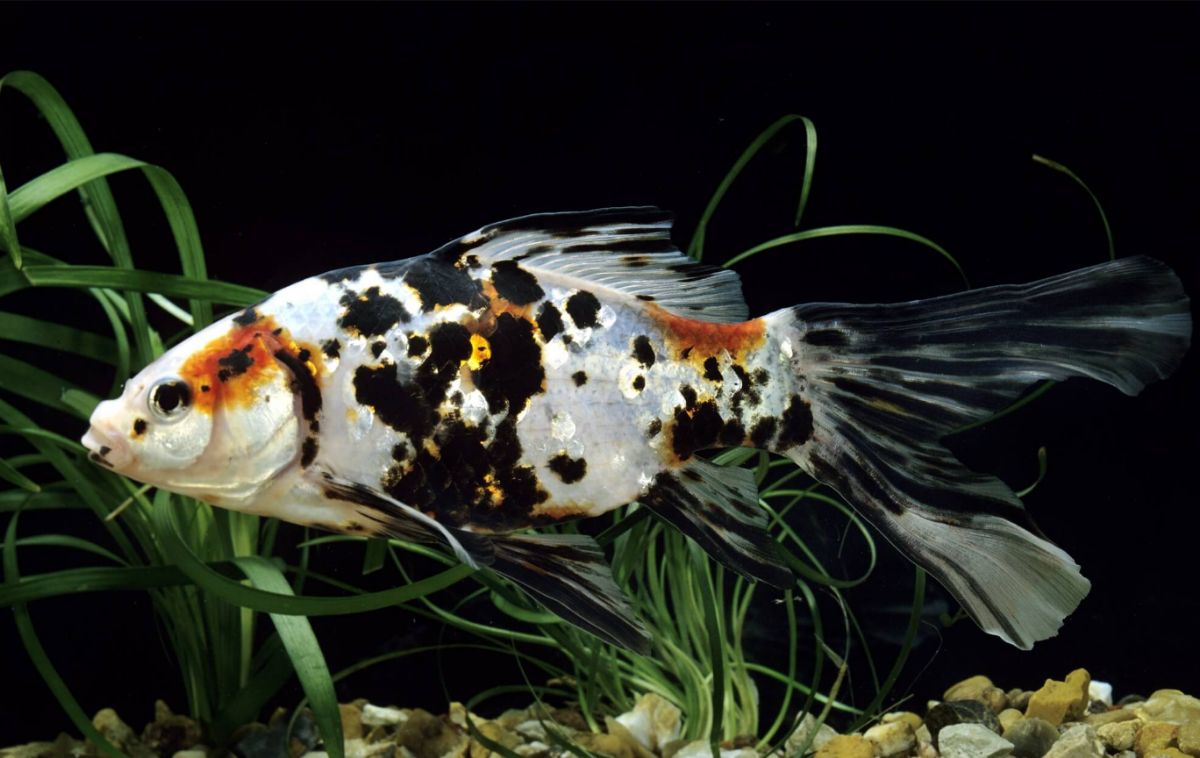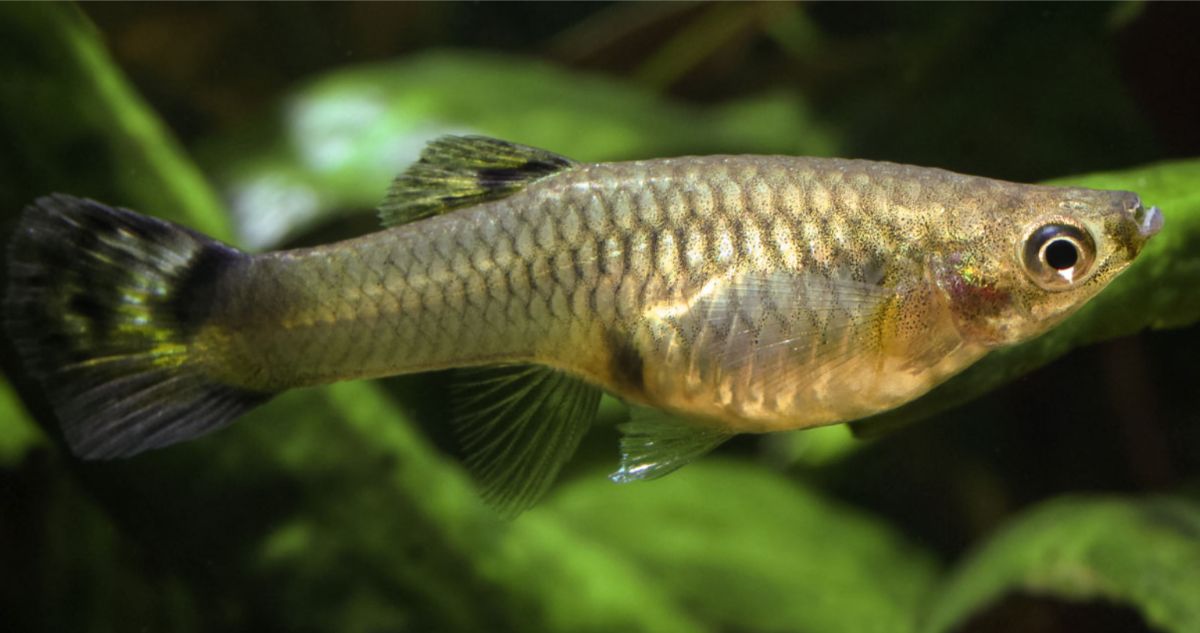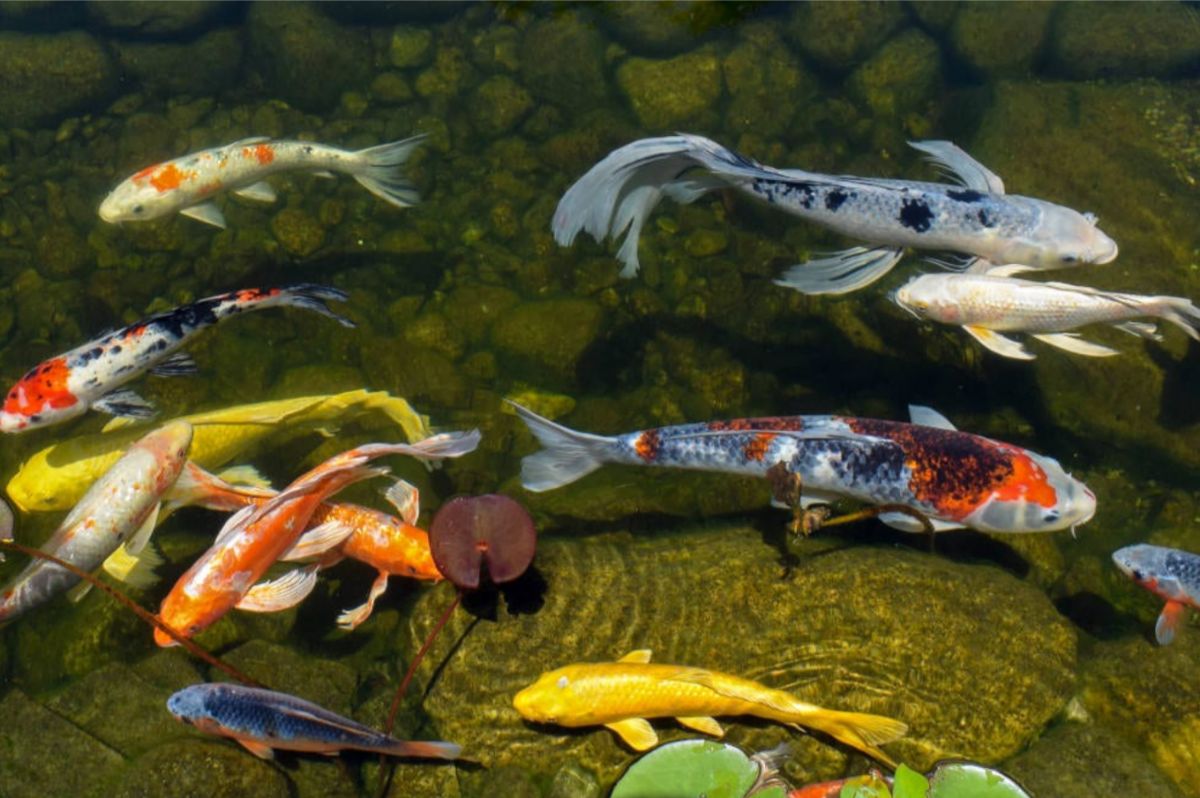Koi are not the only type of fish you can keep in your pond. There are other pond fish out there that can bring beauty and benefits to your water garden. Some are pretty, and others, not so much. Nevertheless they all bring their unique characteristics to a water feature and will lend a little originality beyond the expected koi.
Shubunkins

Shubunkins are a type of goldfish. They have a blunt head, can have either short or long fins, and they can grow to be about 14 to 16 inches long. They are undemanding fish who tend to be hardy with a friendly demeanor. They don’t tend to pick on each other and are customarily easy to train for hand feeding.
Typically, they are multi-colored with a blend of blue, white, black, and red/orange. Some are even mostly white, mostly black, mostly red, and of course, mostly blue. The most desirable shubunkins are basically sky blue fish, “painted” to about 30 percent with brilliant red, and then highlighted with small accents of white and black. The more solid the black, the better, however the black can also be attractive when distributed solely as freckles. In the end, the only thing that matters is that you like the look of the Shubunkins that you pick out.
Shubunkins are hardy fish for ponds in North America and are certainly durable for beginners.
Mosquito Fish

Mosquito fish are from the gambusia group. They are dull-colored, minnow-shaped fish that are closely related to guppies.
Their purpose in most ponds is simply to consume the immature forms of most insect creatures. In other words, they eat mosquito larvae, and that is why many people want them in their ponds. Mosquito fish are very, very hardy and they will survive exposure to low temperatures and most fish diseases with hardly any sign of illness. Therefore, it’s possible to buy sick fish and not see signs of illness. For this reason, it is very important that you quarantine any new Mosquito fish that you buy before introducing them into your pond.
Plecostomus

The plecostomus is a South American catfish that isn’t as easy on the eyes as the other options. To make up for their lacking looks they serve a very handy purpose in your pond, they eat tons of string algae. One fish in a 1,000-gallon pond will eat all the string algae – that’s its favorite food. When you go to the pet shop for a Plecostomus, buy the largest one they have.
At night, in very small ponds, plecostomus will suck on the flanks of slow moving fish. If the pond is really small and the algae is all gone, they’ll suck on anything they can find, and damage some fish. Know that the larger ones are less likely to suck on the other fish than the smaller, more agile plecostomi. As long as your Koi are healthy this will not be a problem. Also we do not recommend putting a plecostomus in a pond that is less than 800 gallons.

